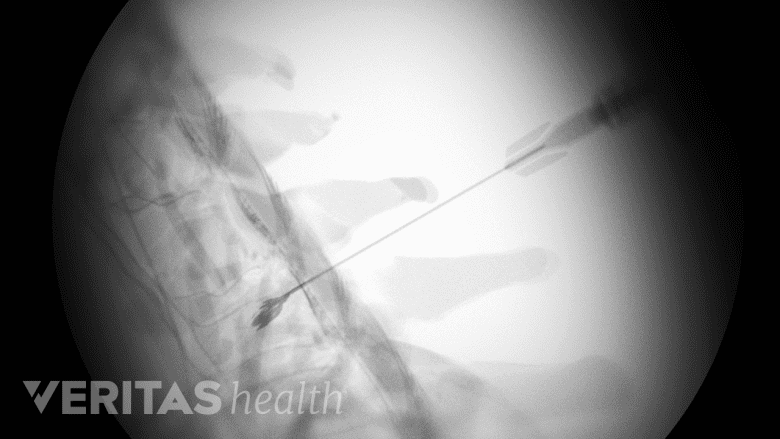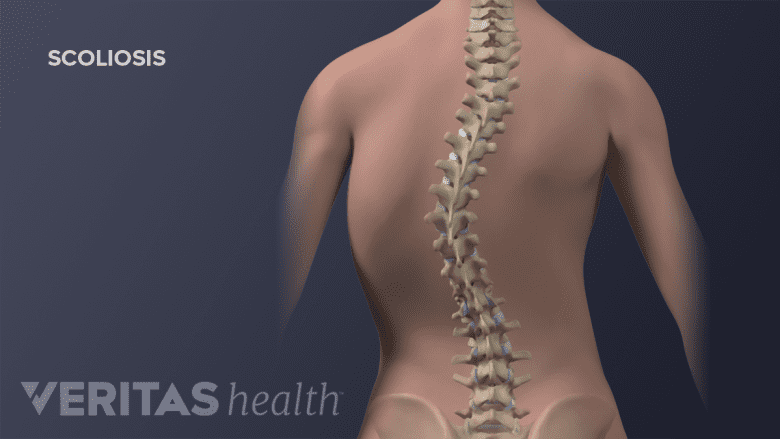A selective nerve root block (SNRB) injection or just nerve block injection is used to both diagnose and treat an inflamed spinal nerve. A medication, typically, an anesthetic or anesthetic with steroid is administered near the spinal nerve as it exits the intervertebral foramen (bony opening between adjacent vertebrae). The medication reduces inflammation and numbs the pain transmitted by the nerve.
In This Article:
How Selective Nerve Root Block Injections Work

X-ray guidance ensures precise placement of medication into the nerve.
When used for treatment purposes, steroids are usually mixed with anesthetics or used alone in selective nerve root block injections. Steroids in nerve blocks work by a combination of the following mechanisms:
- Inhibits the action of certain enzymes such as phospholipase A that causes neural irritation and pain
- Block specific fibers (C fibers) within the nerve that results in lesser pain transmitted to the brain
- Decreases the permeability of nerve fibers to receive blood, decreasing pain transmission
Through these mechanisms, the pain signals transmitted by the target nerve may be reduced.
Before administering the injection, the skin over the treatment site is cleaned to prevent infection. Usually, a small amount of contrast dye is injected first in order to identify if the needle is in the proper location near the target nerve and to avoid injecting into a blood vessel
Due to anatomic variations in every patient, fluoroscopy or ultrasound guidance is almost always used to locate the nerve. The injection may recreate the usual pain that has been experienced by the patient.
Success Rates of Selective Nerve Root Block Injections
Studies evaluating the success of selective nerve root block injections have reported the following:
- In the cervical spine, 1 injection resulted in 57% of patients reporting significant improvement in pain and functional outcome at 6 months.
- In the lumbar spine, 1 injection resulted in 46% of patients reporting significant improvement in pain and functional outcome at 1 year.
Some patients, however, may experience no pain relief or short-term relief for a few weeks. The therapeutic effect can sometimes be delayed by a few days or weeks as the steroid becomes more effective. The pain-relieving effects of selective nerve root block injections are usually higher in patients who participate in strengthening exercises and physical therapy. It is advised to restart therapies according to the physician’s instructions once pain reduction occurs.
See Neck Strengthening Exercises
When Selective Nerve Root Block Injections Are Used

Selective nerve root block injections are used to treat conditions such as scoliosis.
Selective nerve root block injections are used to treat an inflamed nerve root caused by a herniated disc, degenerative changes in the vertebrae such as bone spurs causing nerve compression, and/or conditions such as scoliosis. In any of these conditions, there may be a chemical irritation or pinching of the nerve due to mechanical compression.
Multiple nerve blocks may be performed if more than one nerve is suspected of causing pain.
Risks and Complications of Nerve Block Injections
Although rare, a few risks are possible with selective nerve root block injections, including:
- Infection
- Bleeding
- Allergic reactions
- Spinal cord damage
- Pneumothorax (or collapsed lung with thoracic injections)
Some patients may also experience temporary muscle weakness after a nerve block. This weakness occurs if the medication flows to the motor fibers of the nerves, numbing them. The weakness typically resolves in a few hours and is not harmful.

